How I Tiled our Bathroom Floor – A Floor Tiling Tutorial
Last year we carried out our bathroom renovation. Our old bath tub was steel, had started to rust and no matter what I cleaned it with, it always looked dirty. In an ideal world we would have just changed the tub, but it had a tiled bath panel. This meant when we ripped the tub out we would have to retile. It soon escalated into a bigger job than we first thought! We decided on wall panelling rather than tiling (only after I’d bought all the wall tiles!) and as we were having a roll top bath we’d need to retile the floor. As we couldn’t afford to pay a professional tiler, I thought I’d have a go at tiling myself. It wasn’t actually too difficult, so I thought I’d create a little floor tiling tutorial for you.

Just a quick disclaimer – I’m not a professional tiler, or handyman. I’m just a lady who can’t afford a tiler and thought I’d have a go. I’m sure there’ll be folks out there thinking “ooh I’d have done it differently” and “she’s done a shit job” but this way worked for me!
WHAT YOU’LL NEED:
- Tiles (obviously) (we used the Scintilla tiles from Walls and Floors)
- Grout
- Tile spacers (we used 2mm spacers)
- Tile adhesive – I’d recommend a flexible adhesive in an older house like mine, just in case the floor has any movement in it
- Tiling trowel
- Grout float
- Plywood (we used 3mm as we replaced what was there before, but it’s recommended to use a slightly thicker one, at least 6mm and preferably 9mm-12mm. I didn’t want a step into the bathroom for Holly to catch her foot on, so we just replaced like for like and it’s been absolutely fine)
- Sealant for your plywood (similar to this) to stop your plywood soaking up any moisture and warping
- Tile cutter (we have a machine similar to this but we bought ours from Lidl around 8 years ago. It makes light work of large ceramic tiles like the Scintilla ones)
- Tile drill bit (ours is similar to this one I think)
- Mixing attachment for a drill
- Pencil
- Tape measure
- Spirit level
- Rubber mallet
- Sponge
- Bucket
So here goes with the floor tiling tutorial!
Here’s the before…
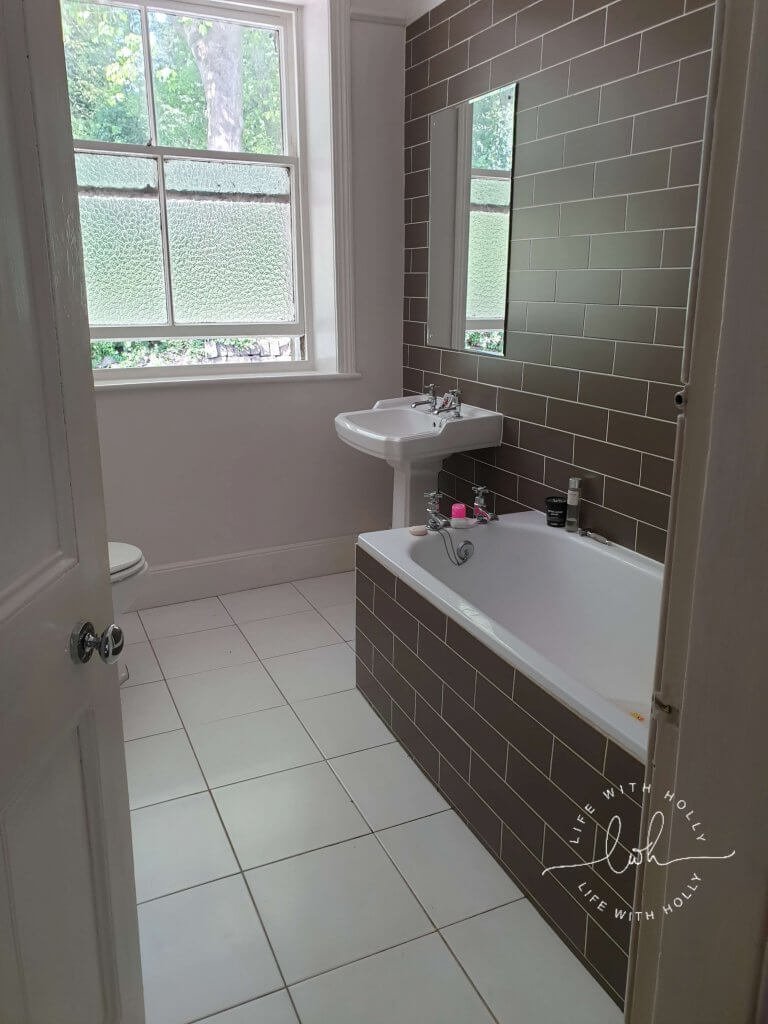
My first job was to rip up the old tiles and plywood. This was NOT a fun job, especially when Mr R and his friend were in a sunny beer garden enjoying a few pints of beer! I meanwhile was in our bathroom, with goggles, gloves, chisel and a rubber mallet prying up the old floor tiles. Once I’d got them all up, I gave it all a sweep and a vacuum (good old Henry, he picks up anything!).
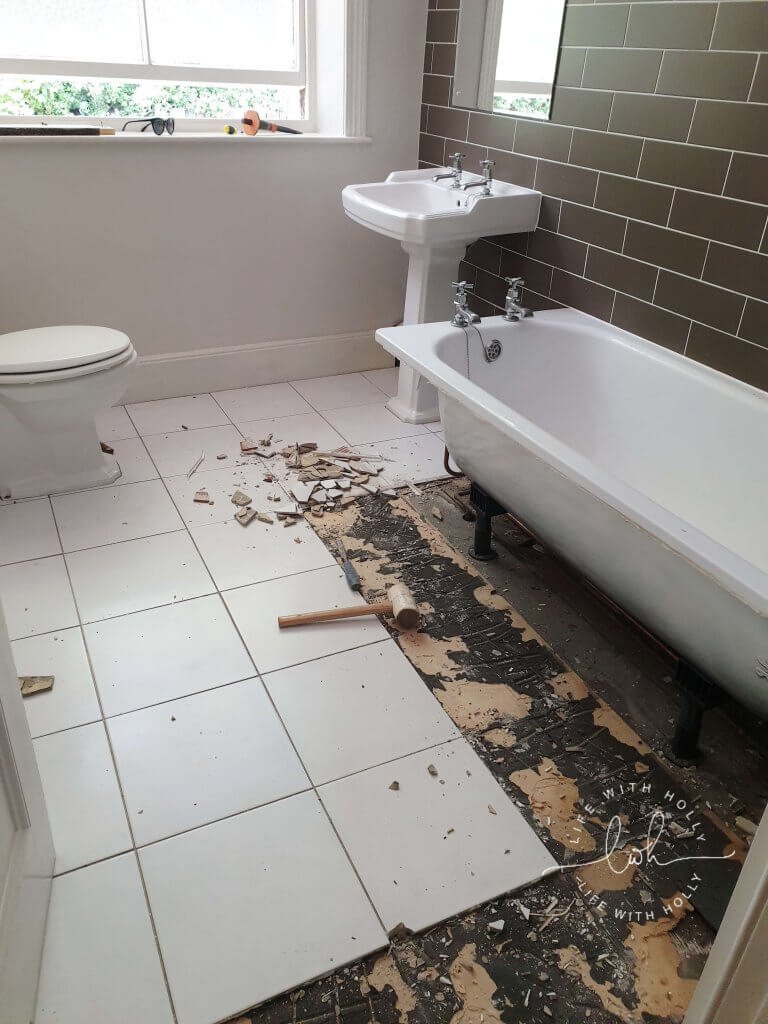
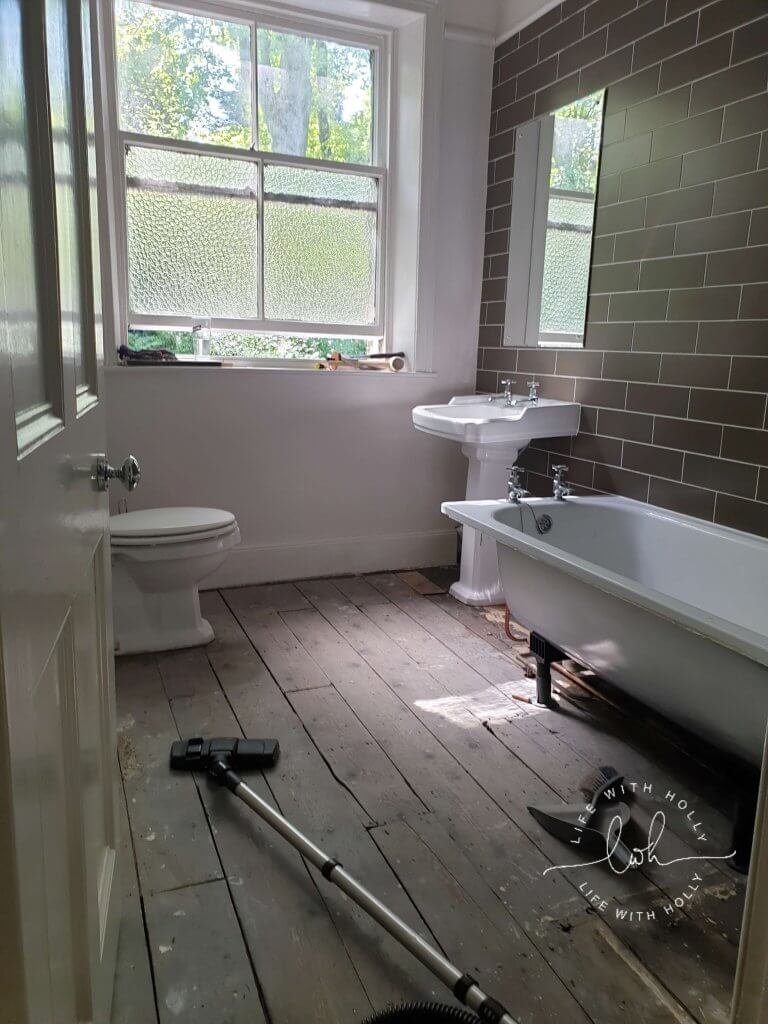
We then had to lay the plywood to create a level surface for the tiles to sit on. It was pretty straightforward apart from around the sink and loo, where we had to make a template to be able to cut the plywood to the right shape. The plywood is fastened in place with small nails. I then used a roller to apply the sealant to the plywood and left it to dry.
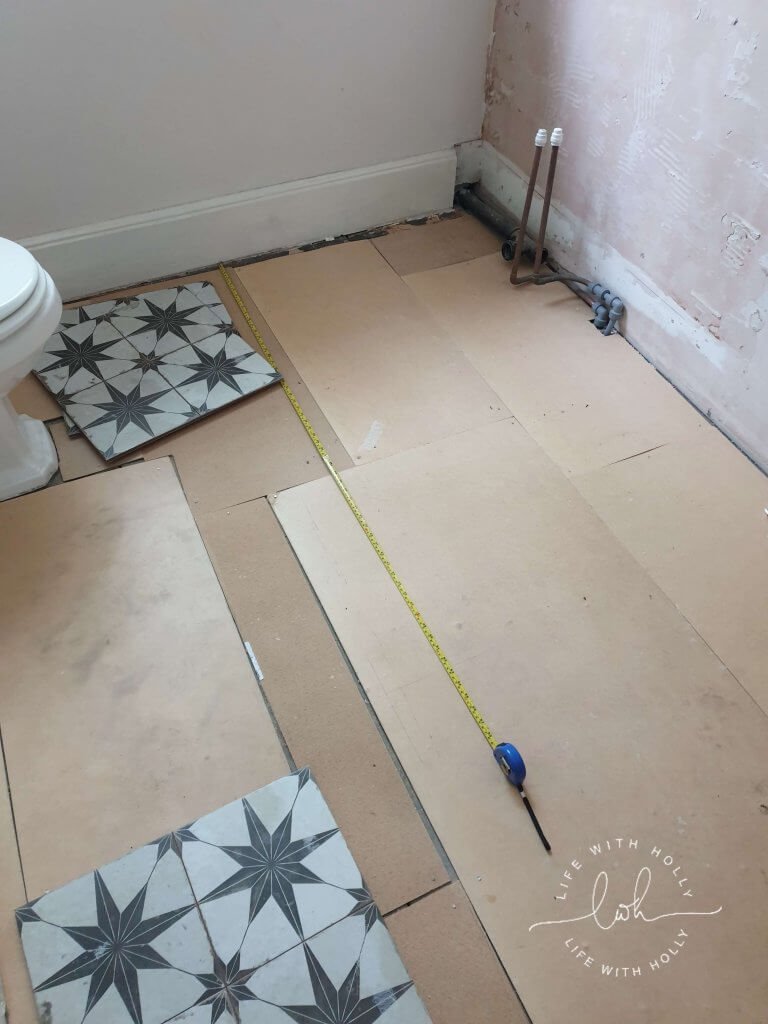
Once the sealant was dry, it was time to start tiling. All the online tutorials say you should find the centre point of the room and work out from there. In reality, we didn’t do that. Well, we did, but I didn’t like the layout of the tiles using that as a starting point. It would have resulted in too many cut tiles and too much faffing about, so we just went by eye. I laid all the tiles out without any adhesive for a dry run. As it’s not a large room (approximately 2m x 3m), this wasn’t a very big job and allowed us to see how the finished floor would look. We tweaked it to get the tiles looking just right.
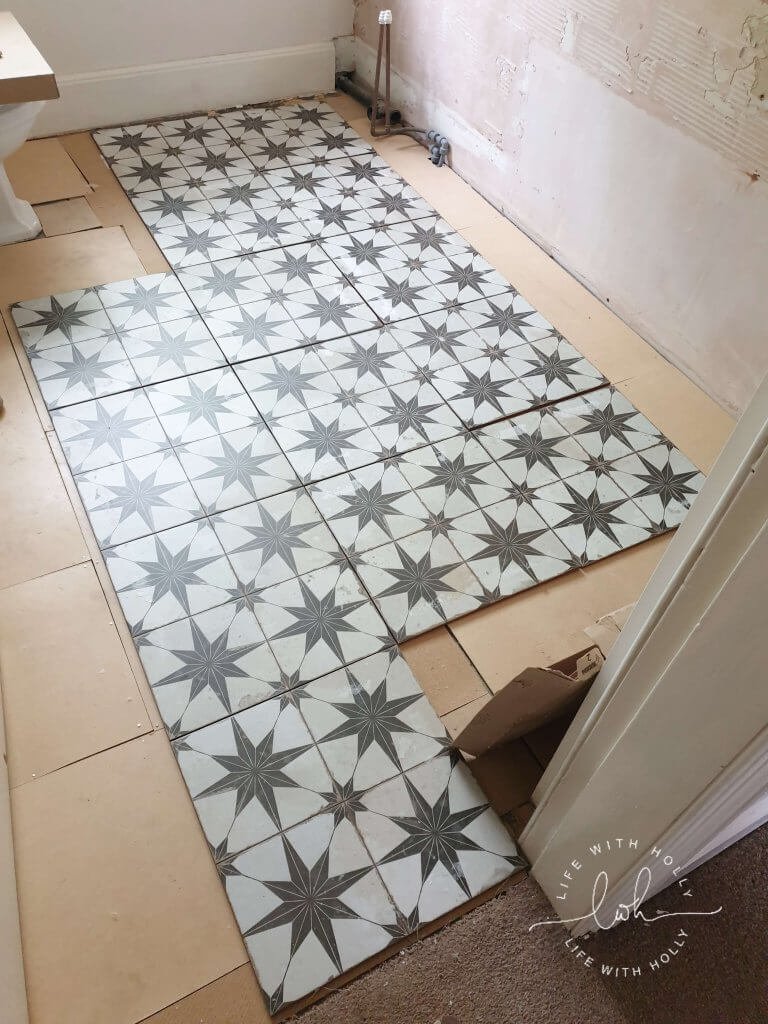
Once we were happy with the layout, we mixed up the adhesive. The best way to do this is to follow the “recipe” on the packet and use a mixing attachment for a drill. We didn’t have a mixing attachment so had to mix it by hand – what a ballache. We should have just invested in a mixing attachment, it would have saved us so much work!
To lay the tiles we started in the middle of the room. I applied a decent amount of adhesive to the floor making sure the whole area of the tile was covered, then put the tile in place. I gave it a wiggle, then gently tapped it into place with the rubber mallet. I used the spirit level to make sure the tile was level, checking in a few directions. I then did the same for the adjoining tiles, making sure to use a spacer in between each tile.
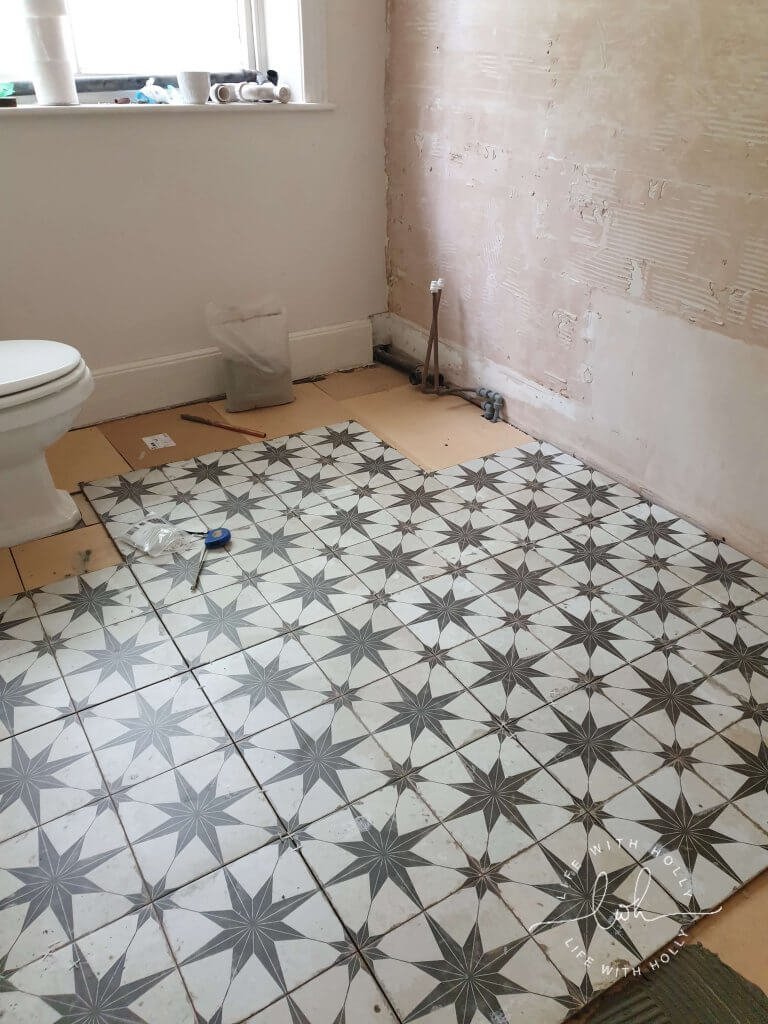
Once we’d laid the whole tiles, it was time for the fiddly job of measuring, cutting and laying the partial tiles. I used the tape measure to measure a few points and marked this onto the tile to be cut. I then handed it over to Mr R to cut (there’s no way I’m using that cutting machine!). To tile around the pipes for the taps on the bath, we used a drill bit to cut holes in the tiles. There was a fair bit of pressure on me and my measuring skills for these ones! For the tiles around the heated towel rail, we did a similar thing but cut a piece out so we could slide the tile in. A professional would have probably taken the heated towel rail off the wall and drilled a hole in the tiles again, but we’re not pros and we didn’t want the hassle of taking the heated towel rail off.
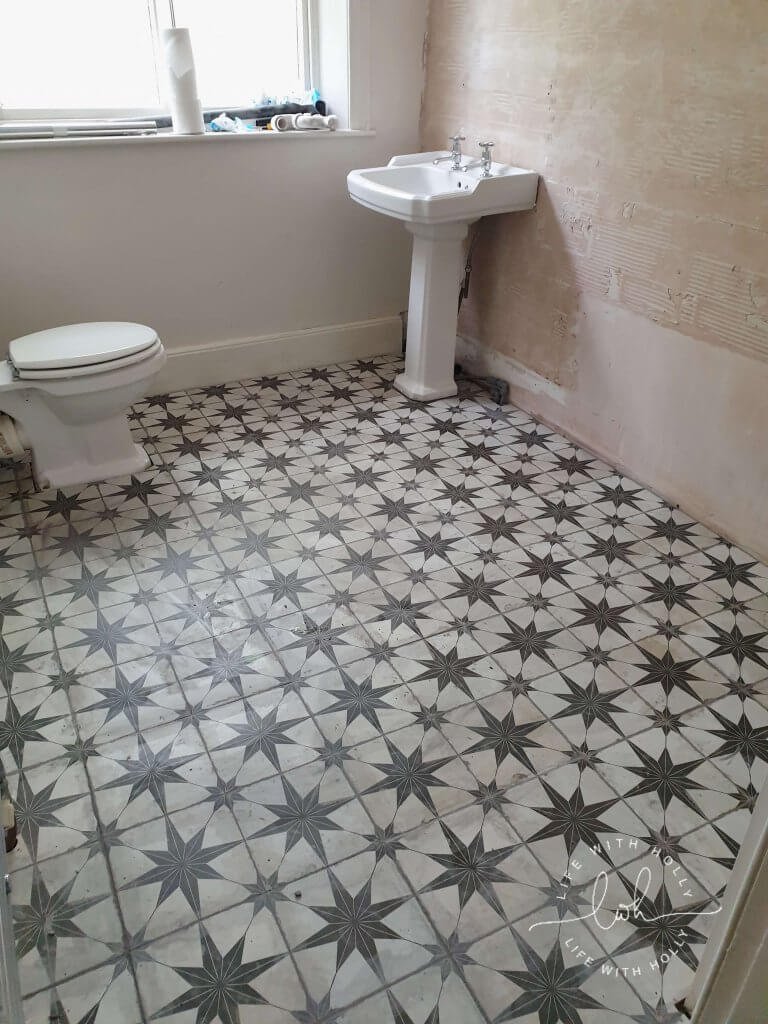
It all went pretty smoothly until I got to the point by the door. For some reason I didn’t think about the width of the tile and how much higher the floor level would be, so carried on merrily tiling away – only to find I couldn’t close the bathroom door. We had to take the door off and plane a little bit off the bottom, but it meant we were without a bathroom door for a day or two. Not great when the loo is on direct view from the front door!!
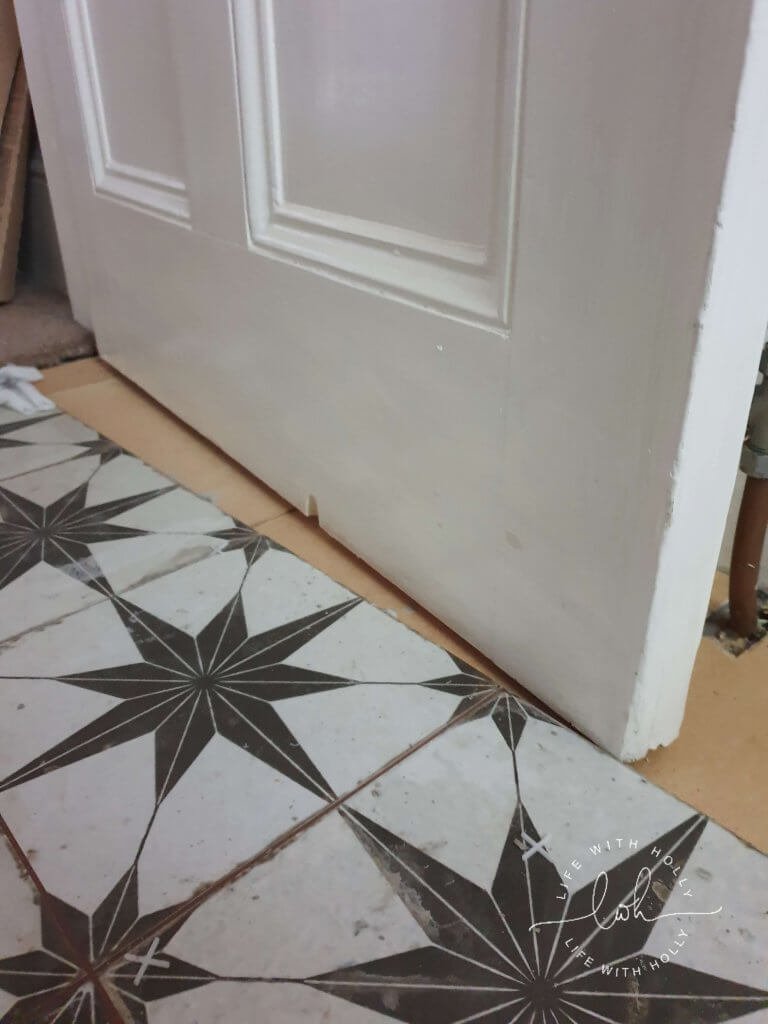
We left the tile adhesive to dry overnight and then the next job was to grout. This is a pretty straightforward job – you basically apply the grout, forcing it down into the gap between the tiles, then wipe the excess off the tiles with a sponge and clean water. Then have a wine or two – you’ve earned it!
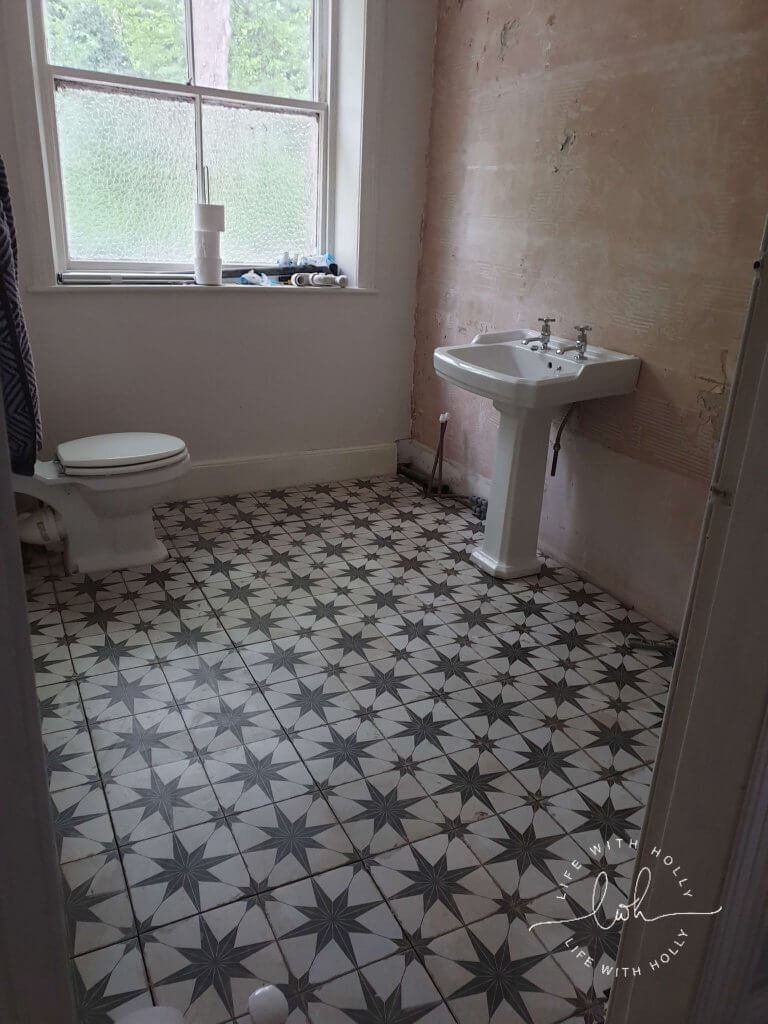
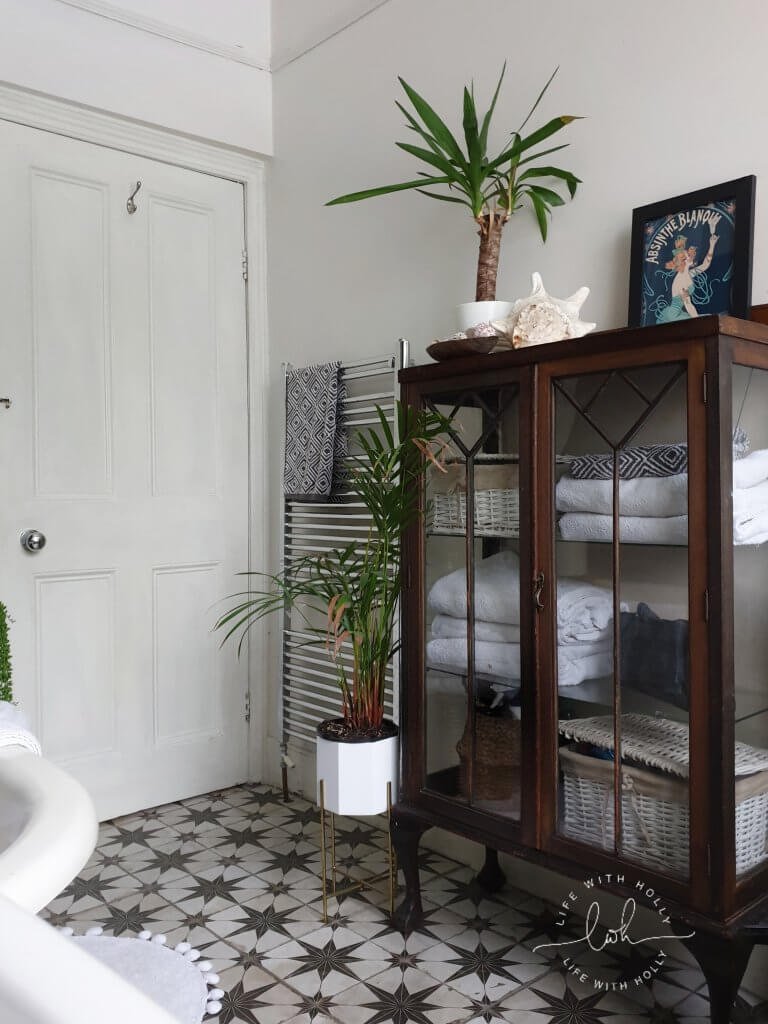


I hope this floor tiling tutorial helps if you’re thinking of having a go. If I can do this, anyone can do it! Feel free to pin this floor tiling tutorial.

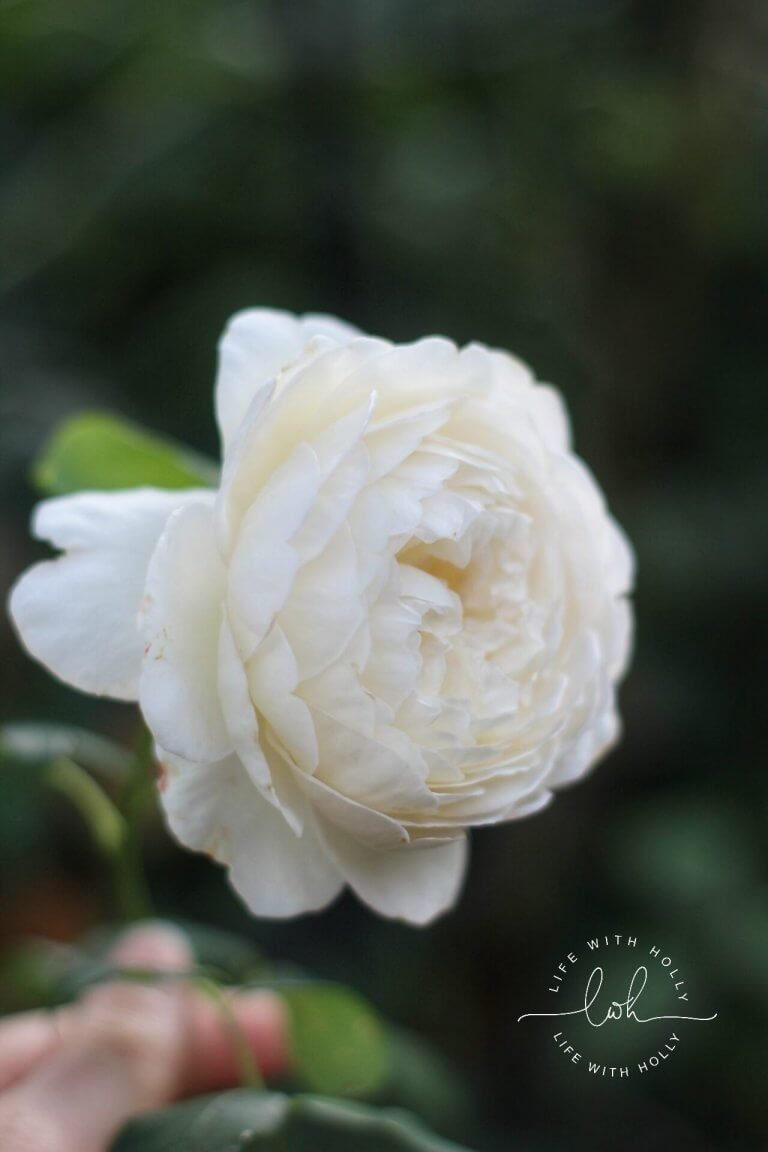
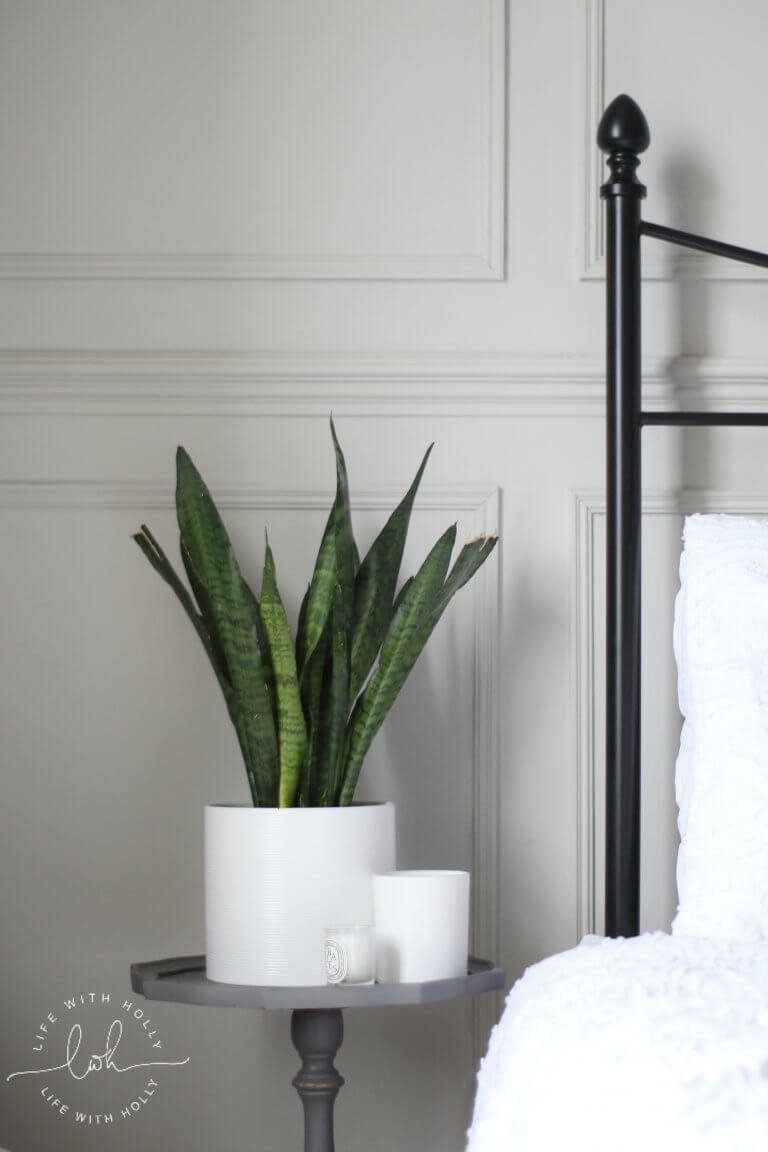

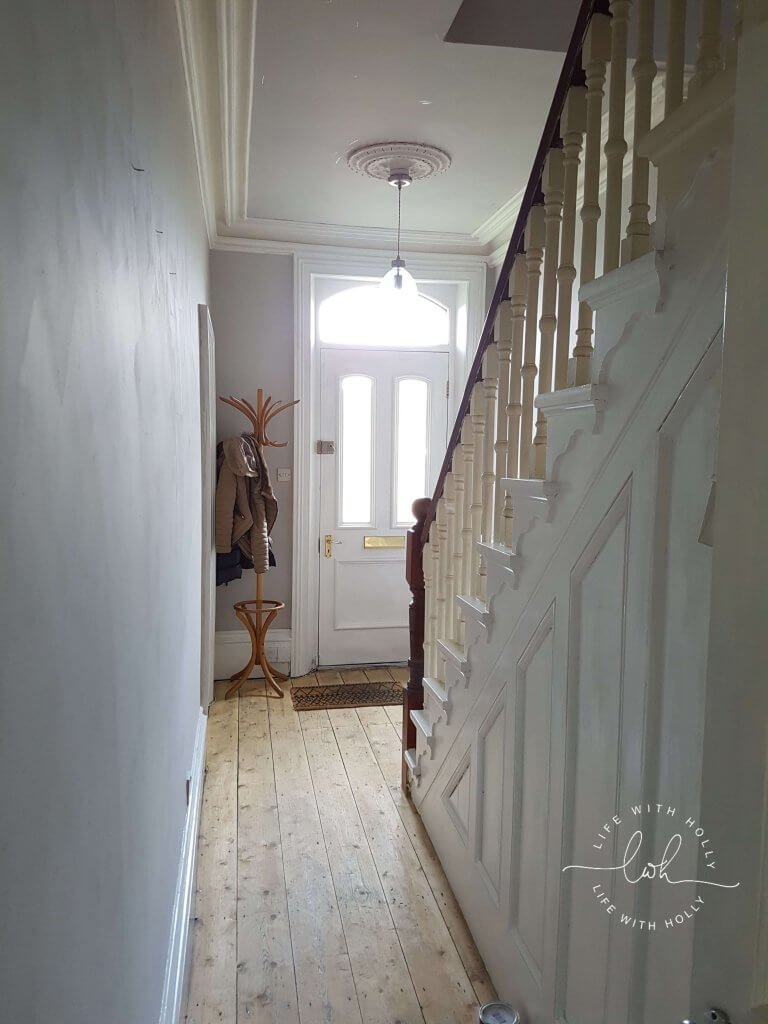

Oh my god! It’s amazing!! You are an artist! 😍
You’re too kind! Thank you so much x
Hi Jo! Your bathroom looks AMAZING! Good for you for doing it yourself. I’m curious to know the cost savings of doing this job yourself.
Wow that looks like such a big job! It looks absolutely amazing! Love the new tile!